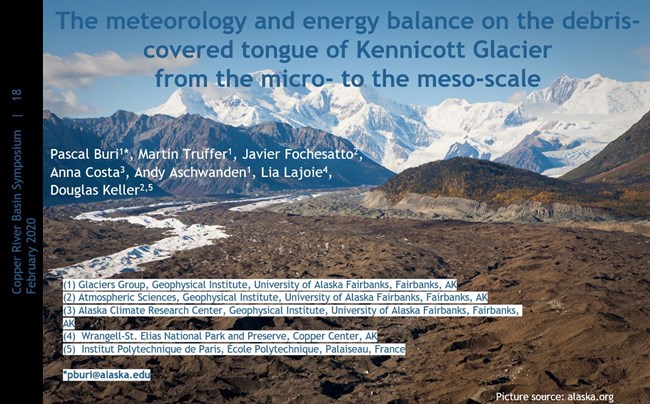Part of a series of articles titled Copper River Basin Symposium - Wrangell-St Elias National Park and Preserve.
Article
The Meteorology on the Debris-Covered Tongue of Kennicott Glacier, Wrangell Mountains -- from the Micro to the Macro Scale.

Pascal Buri, Martin Truffer, Javier Fochesatto, and Andy Aschwanden, UAF
Using observations from weather stations installed in the middle of the Kennicott Glacier tongue (Wrangell Mts.) during the 2019 melting season, we assess for the first time the meteorological conditions on a debris-covered glacier tongue in Alaska. We measured temperature, humidity and wind speeds at different levels above the debris, as well as turbulent fluxes, solar and long-wave emitted radiation and precipitation. For comparison to off-glacier meteorological conditions we use data from a nearby station installed outside the glacier impacted by the same meteorological fields.
We observed a strong heating rate in the debris-covered surface during the day, while radiative cooling occurred overnight. This nocturnal effect prevents the underlying ice from the accelerated daytime melting enhanced by the debris. Additionally, we found that the heat exchange over debris strongly contrasted the conditions over the debris-free surface on-glacier, as well as the terrain surrounding the valley glacier. The experimental determination of turbulent fluxes (sensible and latent heat) play an important role in precising the energy budget of debris glaciers. However, these observations are difficult because the turbulence regime over the glacier tongue is affected during the melting season due to the appearance and backwasting of crevasses and ice faces. Pascal Buri, Martin Truffer, Javier Fochesatto, and Andy Aschwanden, UAF mtruffer2@alaska.edu
Last updated: August 21, 2020
